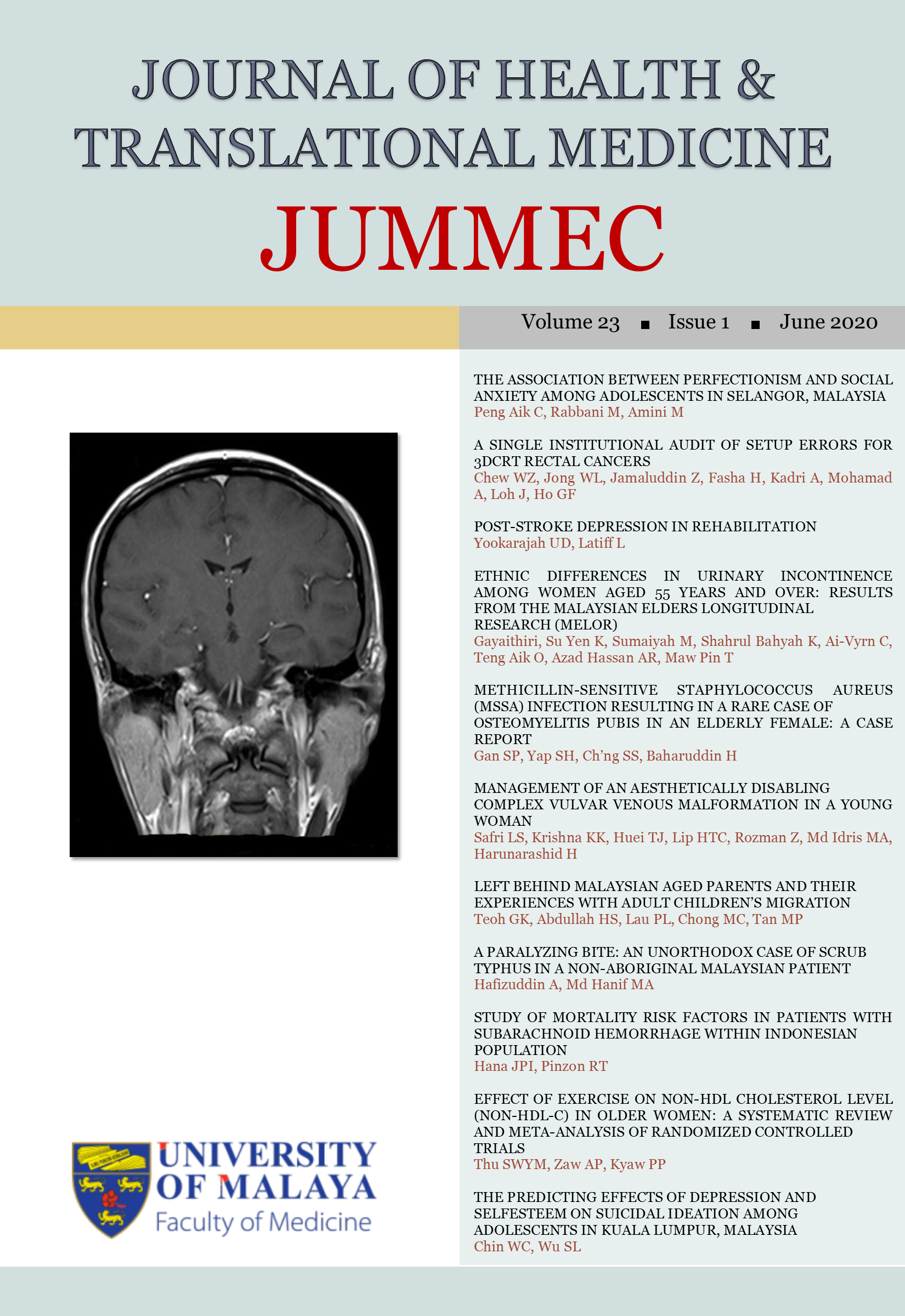ETHNIC DIFFERENCES IN URINARY INCONTINENCE AMONG WOMEN AGED 55 YEARS AND OVER: RESULTS FROM THE MALAYSIAN ELDERS LONGITUDINAL RESEARCH (MELOR)
Received 2019-03-20; Accepted 2020-01-06; Published 2020-01-21
DOI:
https://doi.org/10.22452/jummec.vol23no1.4Keywords:
Urinary Incontinence, Aged, Older Persons, Lower Urinary Tract Symptoms, EthnicityAbstract
Background: Urinary incontinence is a common problem among older women. The objective of this study was to determine the prevalence of urinary incontinence among older women aged 55 years and over in the Klang valley, the most densely populated urban area in Malaysia, and to determine any potential ethnic differences.
Methods: This study used cross-sectional data from the Malaysian Elders Longitudinal Research (MELoR) study. A total of 863 participants were included, with a mean age of 67.97 ± 7.50 (S.D.). They were selected by simple random sampling from the electoral rolls of three parliamentary constituencies.
Results: The prevalence of urinary incontinence was 30.8%. Mixed urinary incontinence (UI) was present in 44.7%, stress UI in 39.1% and urge UI in 16.2%. Ethnic Malays (38%) were more likely than ethnic Indians (32.3%) and Chinese (29.7%) to have UI. Ethnic Malays were also more likely to have stress UI and Indians were more likely to have urge UI .
Conclusion: The prevalence of UI in this study was comparable to other Asian and worldwide studies. The significant association between ethnicity and UI, however, has not been reported in any previous studies. Further studies should identify factors which may determine these ethnic differences in UI.
Downloads
Additional Files
Published
Issue
Section
License
All authors agree that the article, if editorially accepted for publication, shall be licensed under the Creative Commons Attribution License 4.0 to allow others to freely access, copy and use research provided the author is correctly attributed, unless otherwise stated. All articles are available online without charge or other barriers to access. However, anyone wishing to reproduce large quantities of an article (250+) should inform the publisher. Any opinion expressed in the articles are those of the authors and do not reflect that of the University of Malaya, 50603 Kuala Lumpur, Malaysia.


